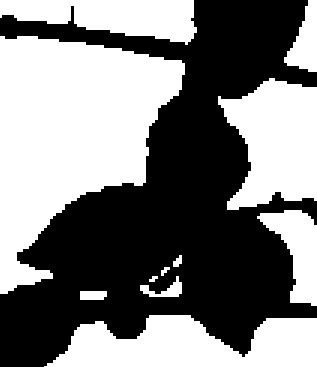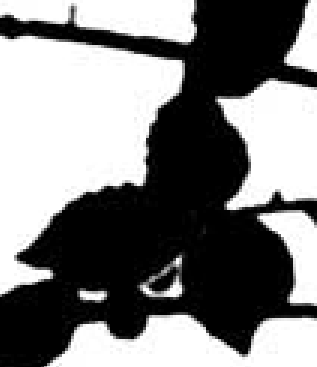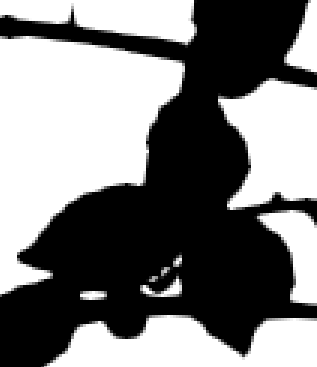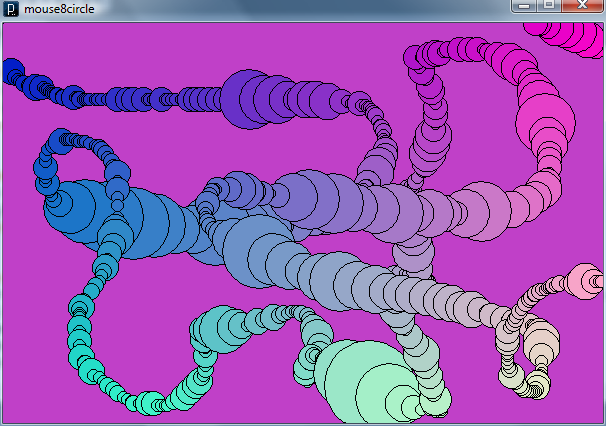SOMA Media has been providing (for a fee) video of SIGGRAPH presentations for the last few years; this service (SIGGRAPH Encore) is invaluable for people who could not attend the conference. Even if you did attend, it is great to be able to see presentations you had to miss (SIGGRAPH has a lot of overlap), or even to revisit presentations you were able to see. The videos include the speaker’s voice synchronized with their screen feed, including slides as well as any demos they were showing – it is almost as good as being in the room.
Encore has part of SIGGRAPH 2003, as well as most of 2004, 2005, 2007 and 2008 (I’m not sure what happened to 2006). As of yesterday, SIGGRAPH 2009 is available as well. This includes Courses, Talks, and Computer Animation Festival presentations, as well as Technical, Game and Art Paper presentations. However, not all sessions are available; as in previous years, some needed to be removed for copyright or other reasons. Unfortunately, some of the omissions include key content like the Beyond Programmable Shading course and the second half of the Advances in Real-Time Rendering in 3D Graphics and Games course. I will list the available presentations; if you see stuff you like, it might be worth purchasing the relevant presentation videos. Individual videos cost between $10 and $20; the entire 2009 set is $300. Presentations which I think are most relevant to readers of this site will be marked in bold.
The available courses are: “The Whys, How Tos, and Pitfalls of User Studies“, Introduction to Computer Graphics, Advances in Real-Time Rendering in 3D Graphics and Games I, Point Based Graphics – State of the Art and Recent Advances, Color Imaging, Real-Time Global Illumination for Dynamic Scenes, Acquisition of Optically Complex Objects and Phenomena, Creating New Interfaces for Musical Expression, An Introduction to Shader-Based OpenGL Programming, Next Billion Cameras, Advanced Illumination Techniques for GPU Volume Raycasting, Scattering, Visual Algorithms in Post-Production, Interaction: Interfaces, Algorithms, and Applications, Shape Grammars, and The Making of ‘Shade Recovered’: Networked Senses at Play.
The missing courses are: Advances in Real-Time Rendering in 3D Graphics and Games II, Build Your Own 3D Scanner: 3D Photography for Beginners, Interactive Sound Rendering, Efficient Substitutes for Subdivision Surfaces, Beyond Programmable Shading (I and II), Visual Perception of 3D Shape, The Digital Emily Project: Photoreal Facial Modeling and Animation, Realistic Human Body Movement for Emotional Expressiveness, Computation & Cultural Heritage: Fundamentals and Applications, and Advanced Material Appearance Modeling.
The available talks are: Tablescape Animation: A Support System for Making Animations Using Tabletop Physical Objects, Teaching Animation in Second Life, Collaborative Animation Productions Using Original Music in an Unique Teaching Environment, MyWorld4D: Introduction to Computer Graphics with a Modeling and Simulation Twist, GPSFilm: Location-Based Mobile Cinema, Applying Color Theory to Creating Scientific Visualizations, BiDi Screen, Karma Chameleon: Jacquard-woven photonic fiber display, Generalizing Multi-Touch Direct Manipulation, Non-Linear Aperture for Stylized Depth of Field, PhotoSketch: A Sketch Based Image Query and Compositing System, Automatic colorization of grayscale images using multiple images on the Web, 2D and 3D Facial Correspondences via Photometric Alignment, Estimating Specular Roughness from Polarized Second Order Spherical Gradient Illumination, Motion Capture for Natural Tree Animation, Connecting the dots: Discovering what’s important for creature motion, Surface Motion Graphs for Character Animation from 3D Video, Methods for Fast Skeleton Sketching, Animation and Simulation of Octopus Arms in ‘The Night at the Museum 2’, Wildfire forecasting using an open source 3D multilayer geographical framework, Innovation in Animation: Exiting the Comfort Zone, “Building Bridges, Not Falling Through Cracks: what we have learned during ten years of Australian Digital Visual Effects Traineeships”, Genetic Stair, Computational Thinking through Programming and Algorithmic Art, Visual Zen Art: Aesthetic Cognitive Dissonance in Japanese Dry Stone Garden Measured in Visual PageRank, Spore API: Accessing a Unique Database of Player Creativity, Results from the Global Game Jam, Houdini in a Games Pipeline, well-formed.eigenfactor: considerations in design and data analysis, Multi-Touch Everywhere!, The Immersive Computer-controlled Audio Sound Theater: History and current trends in multi-modal sound diffusion, Radially-Symmetric Reflection Maps, Smoother Subsurface Scattering, Painting with Polygons, Volumetric Shadow Mapping, Bucket Depth Peeling, BVH for efficient raytracing of dynamic metaballs on GPU, Normal Mapping with Low-Frequency Precomputed Visibility, RACBVHs: Random-Accessible Compressed Bounding Volume Hierarchies, Rendering Volumes With Microvoxels, Multi-Layer Dual-Resolution Screen-Space Ambient Occlusion, Beyond Triangles: Gigavoxels Effects In Video Games, Single Pass Depth Peeling via CUDA Rasterizer, Design and self-assembly of DNA into nanoscale three-dimensional shapes, Computer-Mediated Performance and Extended Instrument Design, InTune: A Musician’s Intonation Visualization System, Adaptive Coded Aperture Projection, Projected Light Microscopy, High-Tech Chocolate: Exploring mobile and 3D applications for factories, Non-Reflective Boundary Condition For Incompressible Free Surface Fluids, See What You Feel – A Study in the Real-time Visual Extension in Music, Designing Instruments for Abstract Visual Improvisation, 2009 Japan Media Arts Festival Review, “Model-Based Community Planning, Decision Support, and Collaboration”, and “Universal Panoramas: Narrative, Interactive Panoramic Universes on the Internet“.
The missing talks are: “Synchronous Objects for One Flat Thing, Reproduced”, GreenLite Dartmouth: Unplug or the Polar Bear Gets It, Shooting ‘UP’: A Trip Through the Camera Structure of ‘UP’, From Pythagoras to Pixels: The Ongoing Trajectory of Visual Music, Modulated Feedback: The Audio-Visual Composition ‘Mercurius’, Visual Music and the True Collaboration of Art Forms and Artists, What Sound Does Color Make?, Exploring Shifting Ground: Creative Intersections Between Experimental Animation and Audio, An Efficient Level Set Toolkit for Visual Effects, Water-Surface Animation for ‘Madagascar: Escape 2 Africa’, Underground Cave Sequence for ‘Land of the Lost’, Creativity in Videogame Design as Pedagogy, Geometric Fracture Modeling in ‘Bolt’, Simulating the Balloon Canopy in ‘Up’, Fight Night 4: Physics-Driven Animation and Visuals, B.O.B.: Breaking Ordinary Boundaries of Animation in ‘Monsters vs. Aliens’, Empowering Audiences Through User-Directed Entertainment, Educate the Educator: Lessons Learned From the Faculty Education Programs at Rhythm & Hues Studios Worldwide, Bringing the Studio to Campus: A Case Study in Successful Collaboration Between Academia and Industry, The Evolution of Revolution of Design: From Paper Models and Beyond, Green From the Ground Up: Infrastructure Rehabilitation and Sustainable Design, Model Rebuilding for New Orleans Transportation, Making Pixar’s ‘Partly Cloudy’: A Director’s Vision, Hatching an Imaginary Bird, Rhino-Palooza: Procedural Animation and Mesh Smoothing, It’s Good to be Alpha, Venomous Cattle for ‘Australia’, Applying Painterly Concepts in a CG Film, From Pitchvis to Postvis: Integrating Visualization Into the Production Pipeline, The Light Kit: HDRI-Based Area Light System for ‘The Curious Case of Benjamin Button’, Interactive Lighting of Effects Using Point Clouds In ‘Bolt’, Composite-Based Refraction for Fur and Other Complex Objects on ‘Bolt’, Dense Stereo Event Capture for the James Bond Film ‘Quantum of Solace’, ILM’s Multitrack: A New Visual Tracking Framework for High-End VFX Production, Immersive and Impressive: The Impressionistic Look of Flower on the PS3, “Universal Panoramas: Narrative, Interactive Panoramic Universes on the Internet“, The Blues Machine, Real Time Live, Clouds With Character: ‘Partly Cloudy’, The Hair-Motion Compositor: Compositing Dynamic Hair Animations in a Production Environment, iBind: Smooth Indirect Binding Using Segmented Thin-Layers, Concurrent Monoscopic and Stereoscopic Animated Film Production, Pushing Tailoring Techniques To Reinforce ‘Up’ Character Design, The Net Effect: Simulated Bird-Catching in ‘Up’, Destroying the Eiffel Tower: A Modular FX Pipeline, Building Story in Games: No Cut Scenes Required, Real-Time Design Review and Collaboration for Global Infrastructure Projects, Sound Scope Headphones, Medial Axis Techniques for Stereoscopic Extraction, Realistic Eye Motion Using Procedural Geometric Methods, Practical Uses of a Ray Tracer for ‘Cloudy With a Chance of Meatballs’, Making a Feature-Length Animated Movie With a Game Engine, and Practical Character Physics For Animators.
Almost all the Technical Papers presentations are available. The following are missing: Light Warping for Enhanced Surface Depiction, How Well Do Line Drawings Depict Shape?, Detail-Preserving Continuum Simulation of Straight Hair, and Generating Photo Manipulation Tutorials by Demonstration. Also, two of the ToG papers (2D Piecewise Algebraic Splines for Implicit Modeling and A BSP-Based Algorithm for Dimensionally Nonhomogeneous Planar Implicit Curves With Topological Guarantees) were not presented at SIGGRAPH due to last-minute visa or illness issues.
All seven of the Art Paper presentations are available, as well as most of the Game Paper presentations. The following are missing: Inferred Lighting: Fast Dynamic Lighting and Shadows for Opaque and Translucent Objects, Experimental Evaluation of Teaching Recursion in a Video Game, and Cardboard Semiotics: Reconfigurable Symbols as a Means for Narrative Prototyping in Game Design.
Finally, Encore has video for a single panel: “The Future of Teaching Computer Graphics for Students in Engineering, Science, and Mathematics”.







